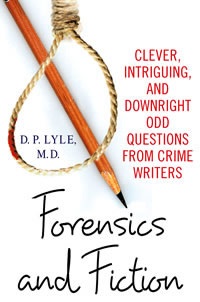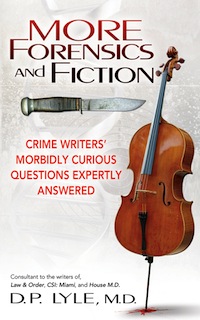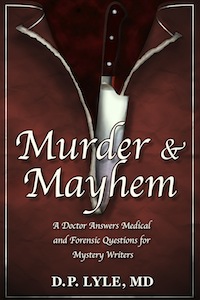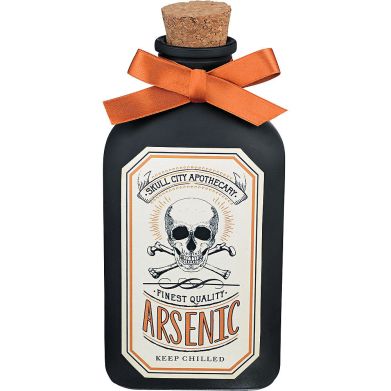Criminal Mischief: Episode #27: ABO Blood Typing
LISTEN: https://soundcloud.com/authorsontheair/27-abo-blood-typing
PAST SHOWS: http://www.dplylemd.com/criminal-mischief.html
SHOW NOTES: http://www.dplylemd.com/criminal-mischief-notes/27-abo-blood-typing.html
ABO Blood Type System
From FORENSICS FOR DUMMIES
By simply typing the blood at a crime scene, investigators narrow their suspect list and completely exonerate some suspects by using the population distribution information for the four ABO blood types.
Population Distribution of ABO Blood Types
O: 43%
A: 42%
B: 12%
AB: 3%
Besides determining the ABO type, serologists are able to further individualize blood samples. RBCs contain more proteins, enzymes, and antigens than those used in the ABO classification system. These include antigens with such catchy names as Duffy, Kell, and Kidd and intracellular enzymes such as adenylate kinase, erythrocyte acid phosphatase, and the very useful phosphoglucomutase (PGM).
PGM is an enzyme that appears in many different forms, or isoenzymes, and at least ten of them are fairly common. Regardless of ABO type, a particular individual can have any combination of the isoenzymes of PGM. The ME and the serologist use that fact to further narrow the list of suspects for further DNA analyses and confirmation that they were capable of leaving a particular bloodstain.
For example, say that a stain is Type AB and has PGM 2. The ME knows the AB blood type is found in only 3 percent (see Table 14‐1) of the population, and PGM 2 is found in only 6 percent of people. Because these two factors are inherited independently, the probability of a particular individual being Type AB, PGM 2 is only 0.18 percent or less than 2 per 1,000.
If the police find blood at the scene that matches the blood of a suspect who has Type AB, PGM 2 blood, the probability that that suspect is not the perpetrator is 2 in 1,000. Although not perfect, those odds still are much better than a coin toss.
Testing for Paternity
You inherit your blood type from your parents. For that reason, a serologist can assess paternity in many cases. The crime lab is often involved in paternity testing because paternity may be a critical component in determining child support, custody, and visitation. It also may play an important role in crimes and civil proceedings that involve kidnappings, insurance fraud, and inheritance conflicts.
Inheriting your blood type
ABO blood types, or phenotypes, come in only four varieties: A, B, AB, and O. But, for some blood types two genotypes, or gene pairings, are possible. A phenotype is what something looks like (in this case the ABO blood type), while the genotype is the underlying genetic pattern. We receive our ABO genes from our parents, one from Dad and one from Mom.
The important thing to know in this system is that A and B genes are co-dominant (equally dominant), while the O gene is recessive. So someone who receives an A gene from one parent and an O gene from the other has Type A blood, but not Type O, because the A gene is dominant.
Determining Possible Genotypes from Phenotypes
Type A: AA or AO
Type B: BB or BO
Type AB: AB
Type O: OO
People with Type O blood must have an OO genotype. They can have neither an A nor a B gene because having one or the other dominates the O gene and produces either Type A or Type B blood.
A person with Type A blood can either receive an A gene from each parent and thus have an AA genotype or an A gene from one parent and an O gene from the other for an AO genotype. Remember, A is dominant, so when it is paired with the recessive O gene, the A gene determines blood type. People with the AA and AO genotypes both have Type A blood, but genetically speaking, they’re different.
Type A parents who have AA genotypes can provide only A genes to their offspring, because all their eggs or sperm have an A gene. But Type A parents who have AO genotypes can provide either an A gene or an O gene to their offspring, because half their eggs or sperm have an A gene, and the other half have an O gene. When both parents are Type A, several possibilities exist for the genotype their offspring will have.
In each of the scenarios presented in Figure 14‐1, the child’s blood type is Type A, except when both parents donate an O gene. In the latter case, the child’s genotype and blood type (phenotype) respectively are OO and Type O. These parents can’t have any offspring who have Type B phenotype or BB, BO, or AB genotypes, because neither parent has a B gene to donate.
Determining Fatherhood
Blood typing can exclude paternity but cannot absolutely verify it. For example, a man with Type AB blood can’t father a child with Type O blood. So if a child has Type O blood, all men with the Type AB are ruled out as the child’s father. A man with Type A (genotypes AA or AO) blood can be the father, but only if he has an AO genotype. Men who have AA genotypes also are excluded. Men with the AO genotype, however, can’t be ruled out at this point.
To dig deeper into this complex system grab a copy of either:
FORENSICS FOR DUMMIES: http://www.dplylemd.com/book-details/forensics-for-dummies.html
HOWDUNNIT: FORENSICS: http://www.dplylemd.com/book-details/howdunnit-forensics.html
















































